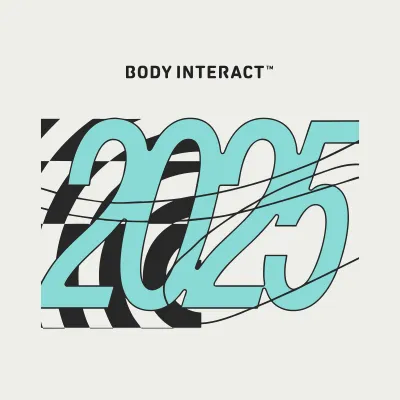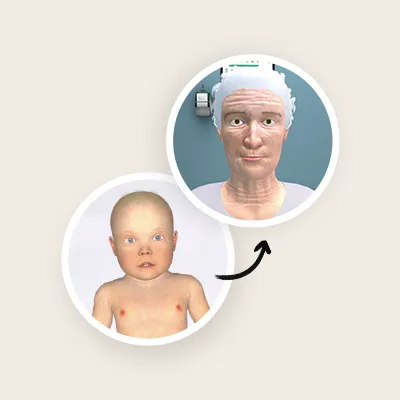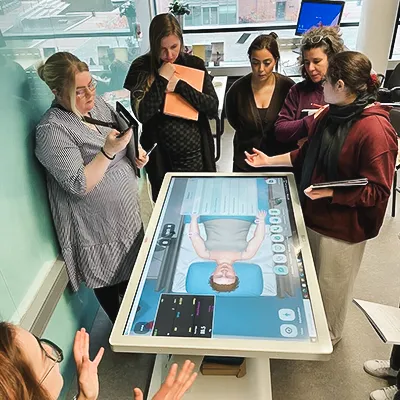Engaging Learning Nursing Approaches: A Milestone in Nursing Education
Nursing education has undergone a remarkable change to keep up with the evolution of healthcare and technological advancements.[1] Traditional teaching methods are gradually being replaced by approaches that promote active student participation, critical thinking, and practical skill development.
This article delves into learning methods where their influence can be an achievement in nursing education.
Flipped classroom with team-based learning
In nursing education, there has been a growing interest, in flipped learning, a teaching approach that reverses methods. A flipped classroom with team-based learning is a blended educational strategy that guides active learning inside and outside the classroom. [2]
In this model, students have access to the materials and resources online before the class takes place. [1] This allows students to delve into and understand the material before class promoting discussions and collaborative team problem-solving in the classroom. By utilizing classroom time, this approach promotes interactions between students and educators.
Benefits of Flipped classroom with team-based learning:
- Student-centered and knowledge retention: Students can progress at their own pace, developing self-directed learning skills and consolidating their knowledge. [1] [3]
- Critical Thinking Development: Classroom discussions and activities emphasize knowledge application to real-life scenarios, facilitate the acquisition of knowledge, enhance thinking abilities, and foster problem-solving skills. [3]
- Enhanced Engagement: Students increase their motivation to learn, and enhance their level of engagement and interest in the subject matter. [4]
Blended Learning : Bridging the Gap
Blended learning, combines in-person teaching with online learning elements. By merging the advantages of both approaches it accommodates a range of learning styles and preferences. With the development of Internet technology, blended learning is a viable solution to the existing challenges in nursing education. [5]
Benefits of Blended Learning in Nursing Education:
- Holistic Learning: Blended learning is more effective than traditional teaching in terms of knowledge, skill performance, and learning satisfaction. [5]
- Interactive Experience: Blended learning allows users to engage in discussions, collaborate with others, and receive feedback, making learning more engaging.
Body Interact as a heart of pedagogical strategies
The conjugation of the flipped classroom with team-based learning as a blended learning strategy is able to produce improvements in nursing students’ learning outcomes. [2]
Body Interact’s realistic simulations and interactive scenarios enrich the flipped classroom experience, allowing students to engage deeply with the material before class. When fused with team-based learning, this approach encourages collaborative problem-solving and enhances students’ critical thinking skills.
Additionally, Body Interact enables the integration of virtual patients with diverse simulation techniques, including task trainers, low or high-fidelity manikins, and standardized patients. This holistic approach, referred to as Simtegration, enriches the overall learning experience.
Simtegration Benefits:
- Promotes the integration of the reasoning skills Body Interact promotes (clinical reasoning, decision-making, diagnosis, prioritizing, critical thinking skills) with the tasks provided by manikins and/or communication skills standardized by patients
- Optimization of existing resources
- Training in interdisciplinary teams
- Provides an active, comprehensive, and engaging learning experience
In Summary
Integrating Body Interact into this pedagogical framework not only elevates the learning experience but also produces measurable improvements in nursing students’ academic achievements and overall understanding of complex healthcare concepts.
References:
[1] Sarıtaş E, Baykara ZG. The effect of flipped learning approach on nursing students’ learning of patient safety: A randomized controlled trial. Nurse Educ Pract. 2023 Aug 10;72:103742. doi: 10.1016/j.nepr.2023.103742.
[2] Kang, H.Y., Kim, H.R. Impact of blended learning on learning outcomes in the public healthcare education course: a review of flipped classroom with team-based learning. BMC Med Educ 21, 78 (2021). https://doi.org/10.1186/s12909-021-02508-y
[3] Bıyık Bayram Ş, Gülnar E, Özveren H, Çalışkan N. The effect of flipped learning on blood pressure knowledge and self-directed learning skills of first-year nursing students: A randomized controlled trial. Nurse Educ Pract. 2023 Feb;67:103557. doi: 10.1016/j.nepr.2023.103557.
[4] Hew KF, Lo CK. Flipped classroom improves student learning in health professions education: a meta-analysis. BMC Med Educ. 2018 Mar 15;18(1):38. doi: 10.1186/s12909-018-1144-z.
[5]Du L, Zhao L, Xu T, Wang Y, Zu W, Huang X, Nie W, Wang L. Blended learning vs traditional teaching: The potential of a novel teaching strategy in nursing education – a systematic review and meta-analysis. Nurse Educ Pract. 2022 Aug;63:103354. doi: 10.1016/j.nepr.2022.103354.
[6] Sáiz-Manzanares, M.C.; Escolar-Llamazares, M.-C.; Arnaiz González, Á. Effectiveness of Blended Learning in Nursing Education. Int. J. Environ. Res. Public Health 2020, 17, 1589. https://doi.org/10.3390/ijerph17051589
By Ana Santa – Educational Content Manager









